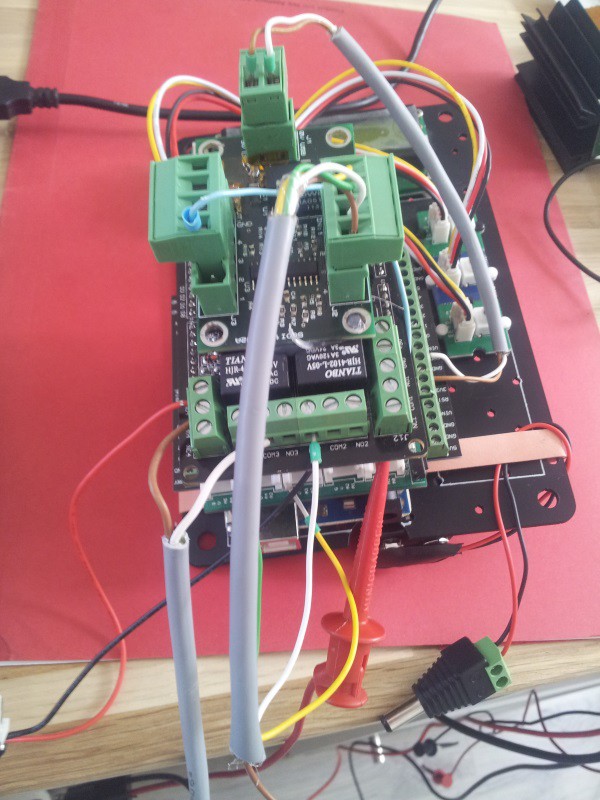As a proof of concept, I stacked a few Arduino shields to test if I can stop a gate with overcurrent detection. My setup is composed of:
- (mandatory these days) Arduino Uno
- seeedstudio grove shield, (very handy) to add 3 push buttons: Open, close and stop test functions
- protoscrewshield with screw terminals to connect power supplies, motors, ...
- relay shield: 4x 3Amps 24V relays
- a revamped board of mine (hot-glued on top) with (very basic non-inverting) amplifiers and 0.100ohms shunt resistors.
On my installation a motor sinks about 0.5A in normal conditions. I measured a 5A stall condition, so I setted a 2.5A limit to stop a motor. An inhibition time of 1 second is used to ignore the first second when a motor starts and its currents consumption increases before stabilize after about one second.
I used a dummy load from arachnid labs to test if the microcontroller triggers when current reaches its limit.
As the current shunt voltage analogRead() function only get a sample from the AtMega controller, I will add some sort of filtering to dampen the spike that might occur and the voltage shunt measurement. (Probably a moving average filter).

Discussions
Become a Hackaday.io Member
Create an account to leave a comment. Already have an account? Log In.